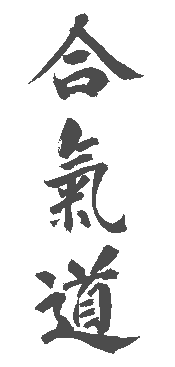Aikido in Everyday Life

Aikido, best known as a martial art, is based on the unity of mind and body, and the study of the spirit. Aikido translates as “the way of harmony”. Harmony means interacting with our environment by changing difficulties and conflict into joy and peace, into a congruity of parts with one another and with the whole. Aikido is based on universal order. The harmony of nature is a source of unlimited power, the source of all our energies and abilities.
Aikido provides a base that helps people to examine and change ways of dealing with stress and conflict by teaching an alternative to flight, fight, or passivity. Peace is actively practiced. The emphasis on relaxation, centering, positive mind, posture and the development of Ki (energy) create an appearance and movement which communicates assertiveness, confidence and strength.
The practice of Aikido ultimately becomes the practice of our daily lives, moment-to-moment. Every moment of life may involve some sort of conflict—with others, with our environments, with our bodies, with ourselves. It is our choice to see this conflict as something to be struggled with, or as the creative force of change which makes true growth and learning possible. Every situation may be used as a springboard to greater growth where we learn to open ourselves to experience, rather than shunning unpleasant aspects of life. Our minds expand, and we become strong.
Aikido demonstrates that there is an alternative response to aggression which will neither reinforce nor escalate conflict. Aggression is an expression of fear and/or rage, and responses which feed into these feelings may escalate conflict and result in harm. Fear does not have to call for aggression. A response based on Aikido principles decreases the reasons for rage or fear by responding actively, with compassion. There is no power struggle, and danger is defused without compromising the principles of peace.
We react to conflict often with aggression, denial, or resistance because we see conflict as negative or a contest. Conflict is simply is a natural fact of living in an increasingly complex society where we are all running about trying to get our jobs done and live our lives. However, what we do with conflict as it happens, how we respond, can be negative.
The Way of Harmony requires one to squarely face the situations of life in a proactive, constructive manner rather than to run away. Patterns of avoidance and fear are broken. Tense, defensive reactions to pressure and conflict, which often only create more violence, are recognized and deconstructed. A new person—straightforward, brave yet humble, able to be both strong and yielding as circumstances require—can emerge from this training.
